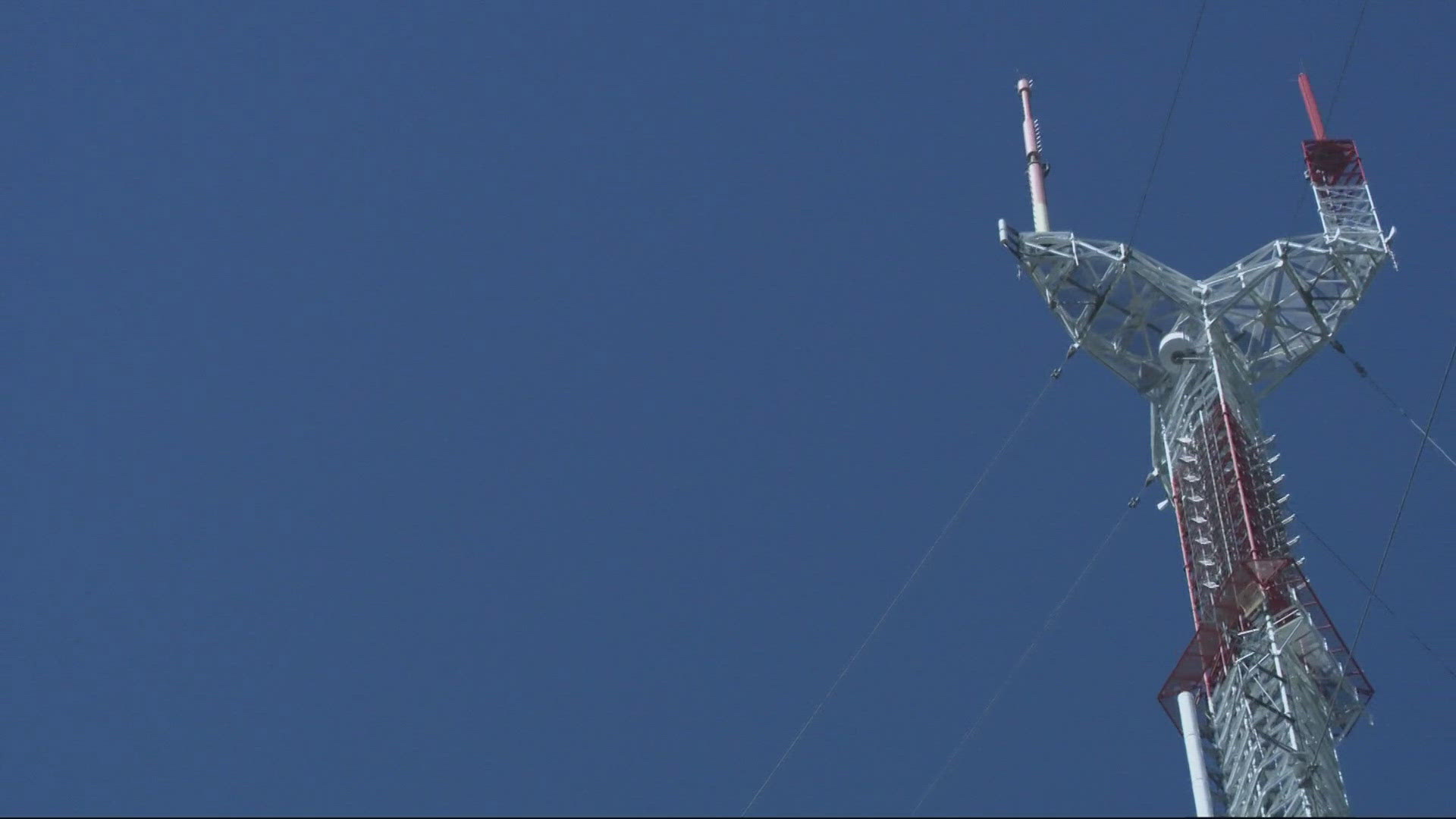PORTLAND, Oregon — Paris is more than 5,100 miles from Portland. You could fly there, one stop — I checked and didn’t see any non-stop flights on Orbitz — in about 13 hours, but you get live Olympic coverage in seconds. Ever wonder how that happens?
"It's an interconnected web of complex devices that gets it to your house,” explained KGW Supervisor of Technology Eric Johnson. It’s more like a minor miracle when you see how that broadcast signal gets from Paris to Portland.
Eric and our dedicated team of engineers keep everything running smoothly, along thousands of miles of cables and dozens of devices that encode, decode and upload that signal.
"It starts as a satellite link coming from NBC. It then goes through our encoders to be encoded into something that the transmitter can understand," said Johnson.
Soaring a thousand feet over the top of Portland’s West Hills is KGW’s tower. First installed in the 1940s, then knocked down by the infamous 1962 Columbus Day storm, engineers restored a signal in a week! The tower was replaced in 1963 and again in 1999, then refitted just three years ago with a new antenna.
That antenna outputs a powerful signal: "65,000 watts of RF-energy,” said Johnson.
With repeaters placed strategically across the state, that 65,000-watt signal gets modified, so we can reach you from Newport to Longview to Baker City to Burns and places in between, so you can see all your Olympic glory in brilliant 1920-by-1080 HD digital quality.
But more important than sports are the emergency communications that run through KGW's tower.
"You've got a bunch of government agencies that still rely on the tower itself,” explained Johnson. FEMA, the FBI and local first responders all use the tower for communications.
"It's important to the community because if something were to happen, you would have a way to receive information that you would possibly not otherwise be able to get," Johnson continued.
The transmitter site is equipped with backup power, a makeshift broadcast studio and redundancy at every level, making sure you’d get that information.
So how did K-G-W become KGW?
"Technically, it's a kilo golf whiskey (KGW) at the time the FCC was distributing call signs; they only anticipated three letters would be enough for anybody that wanted one," during the 1920s, Johnson said.
But what do the call letters stand for?
"KGW means 'keep growing wiser,'" Johnson answered.

